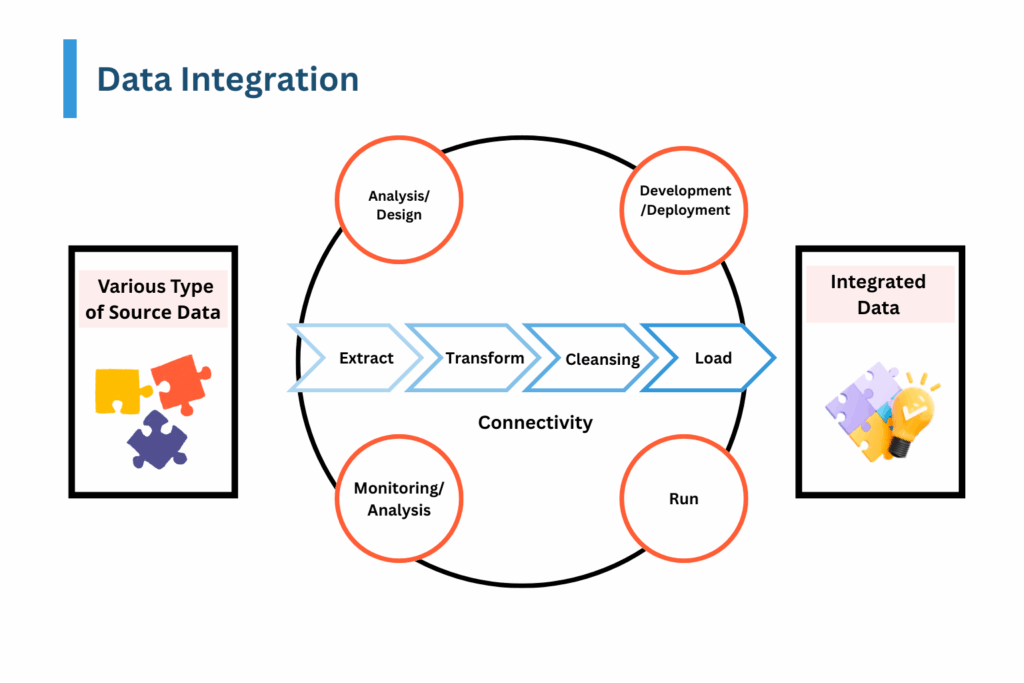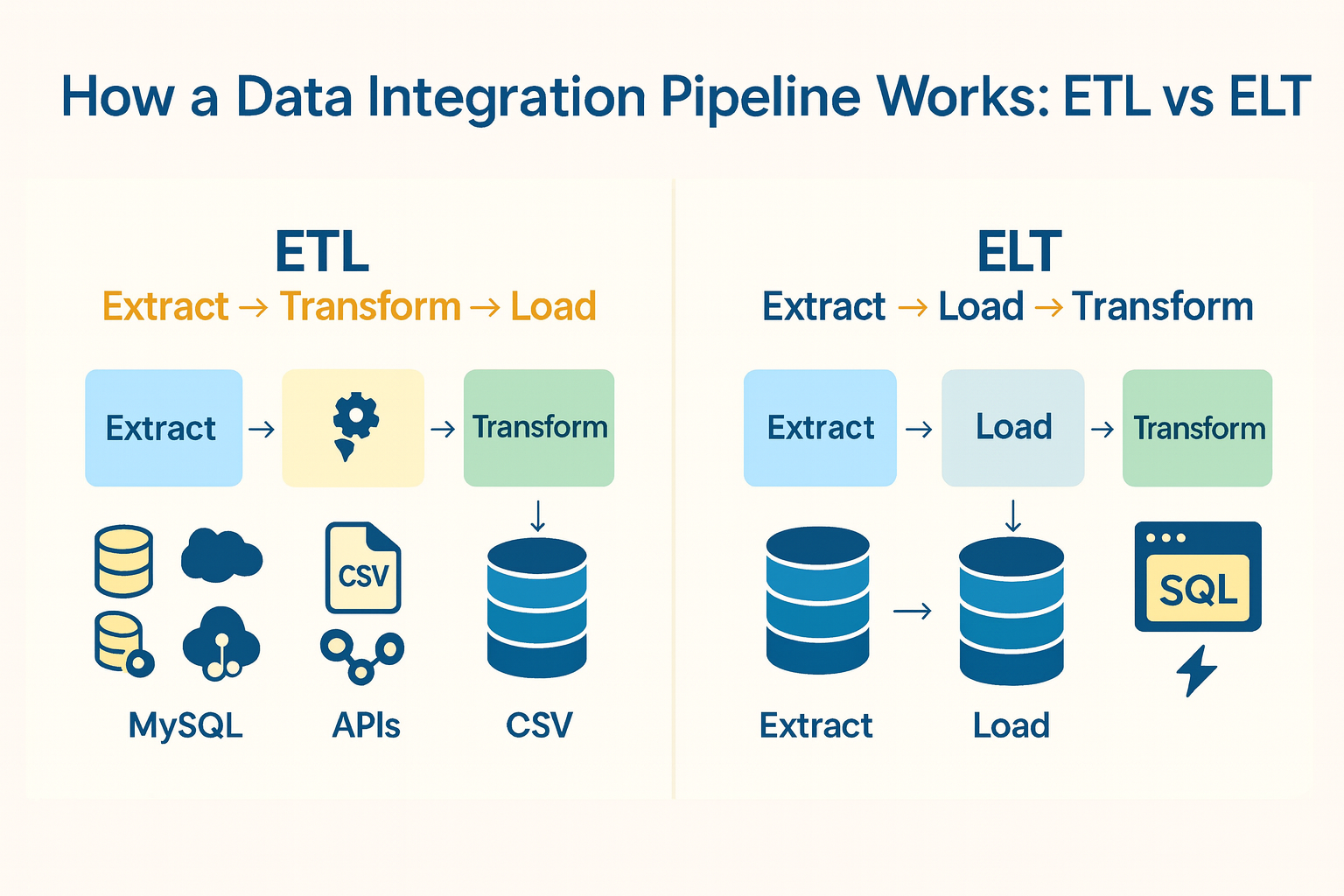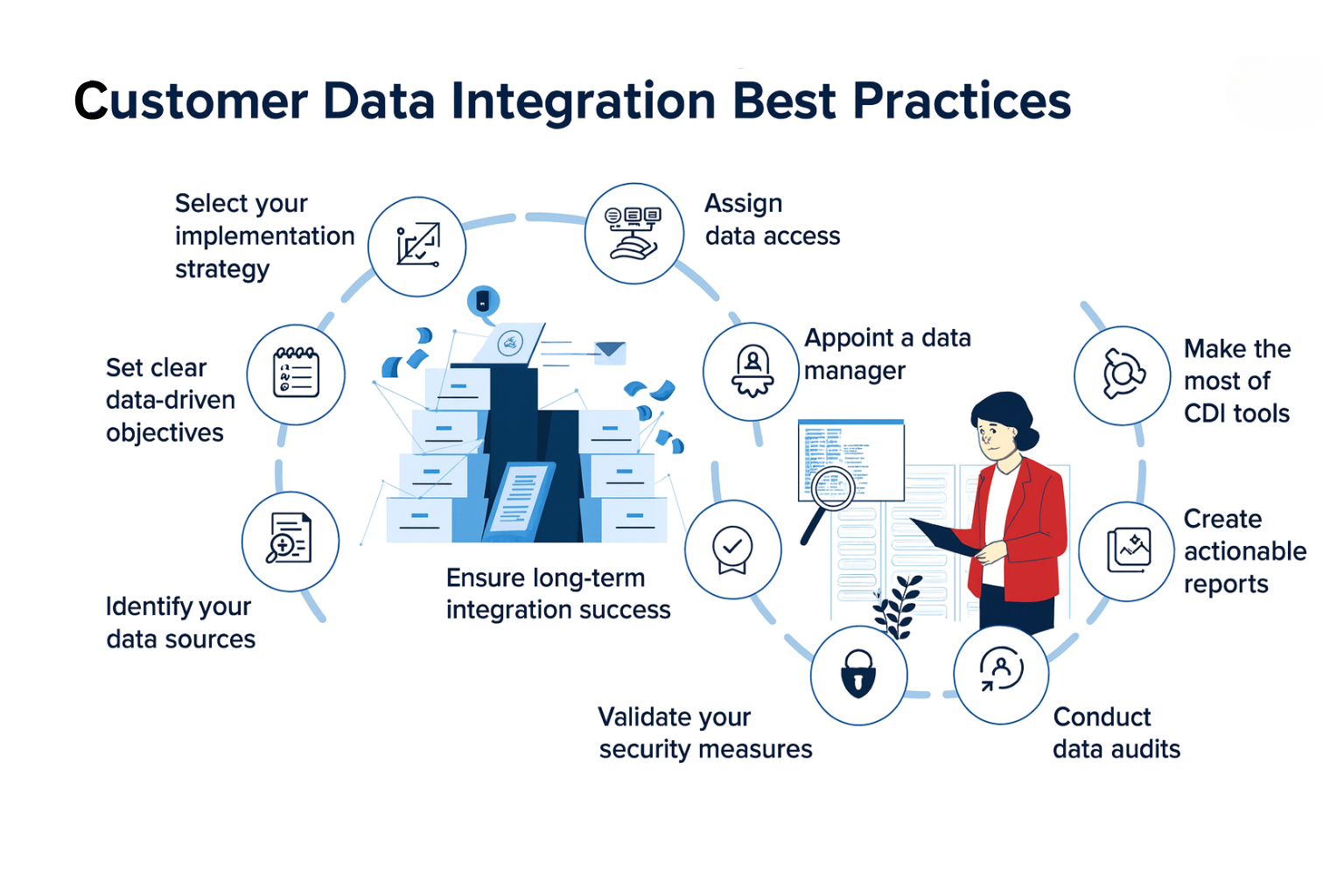Accelerate IT operations with AI-driven Automation
Automation in IT operations enable agility, resilience, and operational excellence, paving the way for organizations to adapt swiftly to changing environments, deliver superior services, and achieve sustainable success in today's dynamic digital landscape.
Driving Innovation with Next-gen Application Management
Next-generation application management fueled by AIOps is revolutionizing how organizations monitor performance, modernize applications, and manage the entire application lifecycle.
AI-powered Analytics: Transforming Data into Actionable Insights
AIOps and analytics foster a culture of continuous improvement by providing organizations with actionable intelligence to optimize workflows, enhance service quality, and align IT operations with business goals.
Businesses today are overwhelmed not by the lack of data, but by fragmented, siloed data systems that obscure insights and slow down decision-making. According to IDC, on average, organizations use over 400 different data sources, and that number is growing with cloud adoption, remote work, and digital transformation initiatives. So, how do you turn this scattered data landscape into a competitive advantage?
The answer lies in a robust, scalable data integration strategy – one that not only unifies disparate data but also delivers it in a trusted, accessible, and actionable format.
Data integration is no longer a technical back-end task; it has become a core business function that directly impacts efficiency, decision-making, customer experience, and revenue. An effective enterprise data integration strategy aligns with business objectives, ensures data consistency, and supports real-time analytics. According to McKinsey, companies that effectively leverage integrated data can outperform peers by up to 20% in revenue growth and 30% in operational efficiency.
In this blog, we’ll explore what a data integration strategy entails, examine different approaches, walk through the steps of building a successful integration plan, and review best practices and industry examples that demonstrate the power of strategic data integration.
What is a Data Integration Strategy?
A data integration strategy is a structured plan for unifying data from different sources into a single, cohesive, and accessible view. It encompasses the tools, methodologies, processes, and governance needed to combine data from various systems such as CRMs, ERPs, cloud services, databases, and third-party applications.
For enterprises, having a strategy ensures seamless collaboration between departments, enhances data quality, and reduces the risks of redundancy or inconsistency. It enables organizations to treat data as a strategic asset – one that drives decisions, optimizes operations, and fuels innovation.
In contrast to ad hoc integrations, a formalized enterprise data integration strategy provides scalability, security, and agility, allowing businesses to adapt quickly to changes in technology and market dynamics.

Types of Data Integration Strategies
Choosing the right data integration strategy depends on the organization’s goals, infrastructure, and data sources. Here are the most common approaches:

1. ETL (Extract, Transform, Load)
ETL is the traditional and most widely used method, where data is extracted from sources, transformed into a suitable format, and then loaded into a central data warehouse. This strategy is optimal for structured data and batch processing.
2. ELT (Extract, Load, Transform)
A variation of ETL, ELT loads raw data first and performs transformation within the target system, often in the cloud. This is better suited for big data and cloud-based architectures.
3. Data Virtualization
This approach allows users to access and query data in real-time from multiple sources without physically moving it. It’s ideal for scenarios requiring quick access and minimal latency.
4. Data Replication
Data is copied from one system to another in real-time or on a scheduled basis. It’s useful for backup, disaster recovery, and maintaining consistency across environments.
5. Streaming Data Integration
Used when dealing with real-time data from sources like IoT devices or financial systems. This is common in industries that require instant data processing and insights.
6. Application-Based Integration
This method relies on software applications (like middleware or APIs) to facilitate integration between systems. It is particularly relevant in the context of enterprise application integration solutions.
Selecting the appropriate strategy—or a hybrid of multiple—should align with your business needs, data volume, latency requirements, and security considerations.
Related Success Story in Action: Quinnox’s data integration improves application performance for world’s largest non-alcoholic bottler
8 Steps to Build a Successful Data Integration Strategy
Creating a successful data integration strategy requires careful planning, alignment with business goals, and the right technologies. Here’s a step-by-step breakdown:

Step 1: Define Business Objectives and Key Data Use Cases
The foundation of any successful data integration strategy lies in clarity of purpose. Before investing in tools or architecture, organizations must identify the specific business problems they aim to solve.
Key questions to answer:
- What core problems are we solving with integration?
- Do we need 360° customer views, predictive analytics, faster reporting, or real-time fraud detection?
- Which KPIs will define success?
These goals should inform and shape your integration initiatives. It’s equally important to tie each use case to measurable KPIs – like increasing marketing ROI by 20% or reducing manual reconciliation time by 40%. When integration efforts are clearly linked to business outcomes, it becomes much easier to gain stakeholder buy-in and secure funding. According to Harvard Study, organizations with data strategies aligned to business goals are 3x more likely to report significant business impact.
Step 2: Audit and Assess Your Current Data Landscape
Once goals are established, the next step is to understand where you stand. Conducting a comprehensive audit of your existing data landscape allows you to identify redundancies, gaps, and opportunities.
This includes:
- Inventory of data sources (internal systems, SaaS apps, APIs, external feeds)
- Mapping of data flows and dependencies
- Evaluation of data quality, formats, latency, and redundancies
- Identification of data silos and ownership
Common pitfalls at this stage include inconsistent schemas, outdated ETL scripts, or datasets lacking proper metadata. The outcome should be a clear visual map of your data architecture, helping you pinpoint bottlenecks and prioritize integration efforts strategically.
Step 3: Choose the Right Integration Approach (or Hybrid Model)
There is no one-size-fits-all when it comes to integration methodologies. The approach you choose must align with your data types, business needs, and performance expectations.
Approaches to consider:
- ETL – Ideal for batch processing and structured data
- ELT – Best for cloud-native environments and big data workloads
- Streaming – Real-time data from IoT, web apps, finance
- Data Virtualization – Low-latency, no-physical-movement queries
- Replication – For backup/disaster recovery
- Application Integration (EAI) – API/middleware-based for app-to-app sync platforms like Salesforce and SAP.
Ultimately, many organizations embrace a hybrid model that mixes these approaches to meet evolving needs across business units.
Step 4: Select Integration Tools, Platforms & Partners
The technology stack you choose will significantly impact your ability to scale, maintain, and optimize integration workflows.
What to look for:
- Pre-built connectors to cloud, ERP, CRM, and legacy systems
- AI-assisted data mapping and schema transformation
- Monitoring and alerting capabilities
- Compatibility with cloud, on-prem, and hybrid deployments
According to Forrester, organizations using AI-enhanced integration platforms can reduce their time-to-insight by up to 60% – a crucial advantage in today’s fast-paced markets.
Step 5: Establish Data Governance and Quality Standards
Without governance, even the most advanced integration architecture can turn into a liability. Data governance ensures that your integrated data is accurate, secure, and compliant. It starts with:
- Defining ownership – who is responsible for what data and establishing rules for validation, enrichment, and access control.
- Master data management (MDM) systems help maintain a single source of truth across business domains.
- Compliance with GDPR, HIPAA, CCPA, etc. which require strict controls over how personal and sensitive data is handled.
- Security: encryption, tokenization, access controls must be embedded into the integration framework.
Establishing a cross-functional data governance council can also help ensure that all departments follow consistent standards.
Related Article: Navigating AI governance for ethical and responsible AI
Step 6: Design, Build, and Orchestrate Data Pipelines
Once strategy, tools, and governance are in place, it’s time to build the core engines—your data pipelines. These pipelines handle the ingestion, transformation, and delivery of data between systems.
Key activities to focus on:
- Build reusable, modular pipelines for ingestion, transformation, and enrichment
- Design for scalability (handle peak loads or schema changes)
- Automate transformations using rules or ML models
- Ensure pipelines support batch, real-time, or near-real-time use cases
Important features include version control, metadata capture, and full data lineage tracking to ensure transparency and traceability. Integration testing – unit, functional, and performance – is a must before full deployment. A well-orchestrated pipeline infrastructure not only accelerates delivery but reduces the operational burden on IT.
Step 7: Test, Monitor, and Continuously Optimize
Integration is not a one-time setup – it’s an ongoing process that needs constant tuning. Begin with comprehensive testing across different data scenarios to ensure correctness and resilience. Once deployed, real-time monitoring becomes essential.
Best practices:
- Unit test each component and end-to-end flows
- Monitor data quality KPIs (e.g., freshness, accuracy, completeness)
- Use observability platforms like Qinfinite for real-time alerts
- Automate anomaly detection using AI
Regular reviews and optimizations help in managing changing data loads, evolving business rules, and compliance updates. According to Gartner, poor data quality costs organizations an average of $12.9 million per year – making monitoring and quality assurance mission-critical.
Step 8: Scale, Evolve, and Innovate
Once your initial integration use case is successful, it’s time to replicate that success across other functions and evolve with emerging tech.
How to scale smartly:
- Expand to new departments or business units
- Add more data domains (customer, finance, product, etc.)
- Upgrade pipelines with AI/ML for proactive insights
- Enable self-service access for business teams via dashboards or data catalogs
To future-proof your strategy, explore how AI and automation can be integrated deeper into the lifecycle – for example, through predictive data mapping or auto-healing pipelines. The goal is to create a continuously evolving, intelligent integration ecosystem that adapts as your organization grows. Those that embed innovation into their integration strategy are best positioned to achieve agility, resilience, and long-term competitiveness.
Best Practices for Data Integration Projects
To ensure long-term success of your data integration project, adopt the following best practices:
1. Start Small, Scale Fast
Begin with a focused use case to demonstrate value quickly. Once trust is built, expand across the enterprise.
2. Collaborate Across Teams
Encourage communication between IT, business units, data analysts, and compliance officers. Cross-functional collaboration ensures your data integration steps are aligned with overall goals.
3. Invest in Automation and AI
Modern platforms powered by AI in data integration can automate data mapping, transformation, and anomaly detection, significantly reducing manual errors and time to value.
4. Ensure Data Security and Compliance
Implement strong encryption, access control, and audit trails. Stay compliant with data privacy regulations like GDPR, HIPAA, or CCPA.
5. Embrace Cloud and Hybrid Models
Leverage the flexibility and scalability of cloud platforms while ensuring compatibility with on-prem systems. Consider enterprise application integration solutions for bridging legacy and modern systems.
6. Monitor Continuously
Establish proactive monitoring and alerting systems to track data flows, pipeline performance, and anomalies in real time.
Real-World Use Cases and Industry Examples
A well-executed enterprise data integration strategy can drive transformative results across industries. Let’s explore a few:
Retail: Personalized Customer Experiences
A global retailer integrated data from online stores, mobile apps, in-store POS, and loyalty programs. This unified view enabled personalized marketing, improved inventory planning, and boosted customer satisfaction.
Finance: Real-Time Fraud Detection
Banks used streaming data integration to analyze transactions in real-time. AI-powered tools detected anomalies instantly, preventing fraud and improving compliance.
Manufacturing: Predictive Maintenance
Using IoT data integrated with ERP and CRM systems, manufacturers could predict machine failures and schedule maintenance proactively, reducing downtime and costs.
Logistics: Supply Chain Optimization
A logistics firm integrated GPS data, delivery schedules, and customer portals. This allowed real-time tracking, improved delivery times, and enhanced customer communication.
Each of these examples highlights how a strategic data integration plan can unlock efficiencies, enable innovation, and provide a competitive edge.
Conclusion
Data integration is more than just connecting systems – it’s about enabling smarter, faster, and more informed decisions across the enterprise. A well-crafted data integration strategy not only improves operational efficiency but also fosters agility and innovation.
By aligning integration efforts with business goals, choosing the right technologies, and adopting proven data integration best practices, organizations can turn data into a strategic asset.
Whether you are modernizing your infrastructure or launching new digital initiatives, partnering with the right digital integration services provider and leveraging enterprise application integration solutions is key to success. And as AI in data integration becomes more mainstream, the future holds even more promise for seamless, intelligent data management.
Ready to maximize your data’s potential? Quinnox’s AI in Data Integration solutions bring together intelligent integration and next-gen innovation for future-ready enterprises.
Frequently Asked Questions (FAQs)
A data integration strategy is a comprehensive plan for unifying data from multiple sources into a centralized system for consistent access, analysis, and reporting. It defines the tools, methods, and governance processes used to ensure data consistency, quality, and usability across the organization.
For enterprises, a data integration strategy is vital to eliminate data silos, improve operational efficiency, ensure data accuracy, and enable real-time decision-making. It also supports regulatory compliance and accelerates digital transformation initiatives.
Key steps include defining business goals, auditing current systems, selecting the appropriate integration approach, choosing tools and platforms, establishing governance, building data pipelines, and continuously testing and optimizing the solution.
Data integration ensures that decision-makers have access to clean, consistent, and real-time data from all relevant sources. This enhances forecasting, reporting, and strategic planning while reducing delays, inefficiencies, and operational risks.